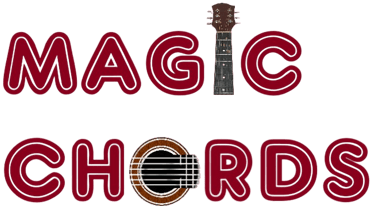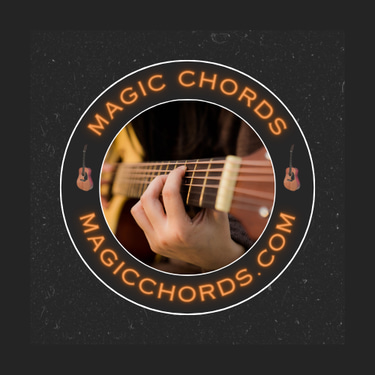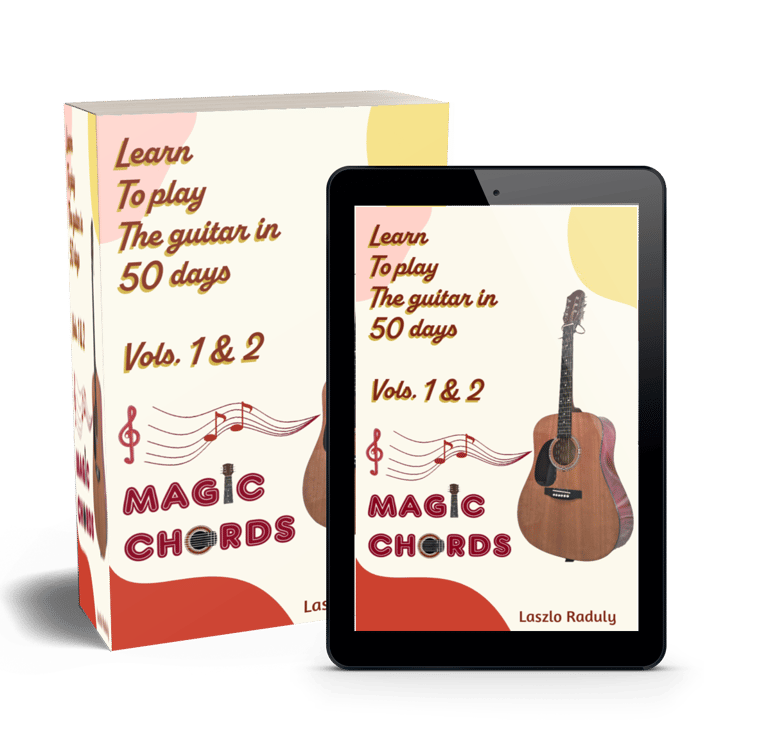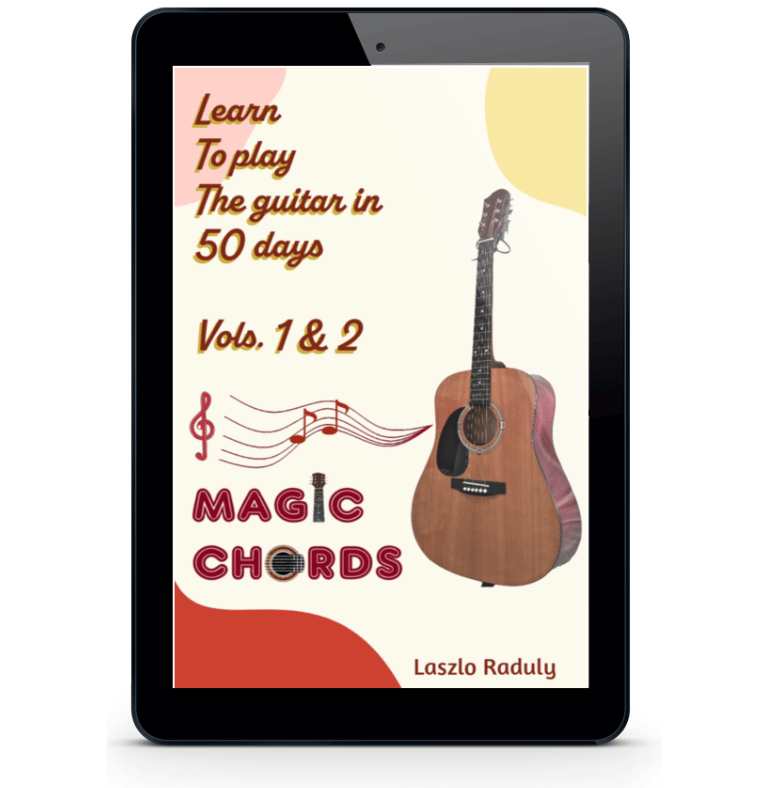
How to Start Playing Guitar and Learn Songs Fast
Want to learn music easily? This guide shows you how to start playing guitar with beginner-friendly tips boosting confidence and helping you play songs quickly.
magicchords.com
8/25/2025




Learning music is easier than you think. Discover how to start playing guitar with simple steps that help beginners build confidence and quickly learn their favorite songs.
Starting your musical journey can feel exciting yet a little intimidating, especially if you are unsure how to start playing guitar in the most effective way. The guitar is one of the most popular and versatile instruments, and learning it opens the door to playing countless songs across different genres. For beginners, the process becomes much easier when you break it into small, manageable steps.
Understanding how to start playing guitar begins with choosing the right instrument. Acoustic guitars are often recommended for newcomers since they are simple to maintain and allow you to focus on basic techniques without added equipment. After that, your next step is to learn a few fundamental chords such as G, C, D, and Em. These chords are building blocks for many popular songs and help you play recognizable tunes faster than you think.
Developing a steady practice routine is just as important as learning chords. Even practicing for 10 to 15 minutes daily will help you gain finger strength and muscle memory. As you explore how to start playing guitar, try incorporating easy strumming patterns, which make songs come alive. Following structured online tutorials or guided lessons ensures you progress smoothly without frustration. Most importantly, always connect your practice with real songs you enjoy, because this keeps learning fun and motivating. With patience and consistency, discovering how to start playing guitar will feel both natural and rewarding.


When beginning your musical journey, it’s important to understand the basics before diving into songs. Many players wonder how to start playing guitar, and the answer often begins with proper setup and tuning. To ensure your instrument sounds right, you can easily tune your guitar online using reliable tools that guide each string. Once tuned, simple chords and practice routines help you progress steadily while enjoying the learning process.


Choosing the Right Guitar for Beginners
When embarking on the journey of learning to play the guitar, one of the most crucial decisions a beginner faces is selecting the right type of guitar. There are three primary categories of guitars: acoustic, electric, and classical, each catering to different musical styles and preferences. Understanding the key differences can significantly enhance a novice's learning experience. So the first step in how to start playing guitar is choosing the right instrument, whether acoustic or electric, based on your musical goals. Once you have your guitar, learning a few simple chords is the best way to start playing recognizable songs quickly.
Acoustic guitars are perhaps the most traditional option, characterized by their hollow bodies that naturally amplify sound. They are ideal for beginners seeking to play folk, country, or rock music. An advantage of acoustic guitars is that they do not require any additional equipment, making them convenient for practice anywhere. When choosing an acoustic guitar, beginners should consider features such as string gauge, body size, and neck width, as these factors can influence playability.
Electric guitars, on the other hand, are known for their versatility and ability to produce a wide range of sounds, particularly suitable for rock, blues, and jazz genres. They require an amplifier for sound production, which may seem daunting for beginners, yet many players find the lighter gauge of strings and lower tension easier to play. Electric guitars often come with various features, such as humbucker or single-coil pickups, which can significantly affect the instrument's tonal characteristics.
Classical guitars, distinguished by their nylon strings and wider necks, are well-suited for those interested in classical, flamenco, or fingerstyle playing. The soft tension of nylon strings is gentler on the fingertips, making it an ideal choice for novices still developing calluses. When selecting a classical guitar, a beginner should focus on the size and comfort of the instrument to enhance their practice sessions. Budget considerations are essential when purchasing a first guitar. Brands like Yamaha, Fender, and Epiphone offer beginner-friendly models that balance quality and affordability. Ultimately, the right choice will resonate with personal musical goals and comfort, laying a solid foundation for a fulfilling guitar-playing journey.
How to Start Playing Guitar: Essential Guitar Techniques
For those embarking on the journey of learning guitar, mastering essential techniques lays a solid foundation for future musical growth. Proper hand positioning is critical; the left hand (for right-handed players) should be agile and relaxed, with fingers arched above the fretboard. This ensures ease of access when forming chords. It is vital to allocate time to familiarize yourself with how to hold the guitar; your body and the instrument should create a comfortable relationship to facilitate an enjoyable playing experience.
Another key technique is the basic strumming pattern. Strumming serves as the rhythmical heartbeat of the music, helping to anchor the melody. Beginners can start by using a down-stroke followed by an up-stroke, giving way to simple 4/4 time signatures. As learners become more comfortable, they can explore varied strumming patterns, allowing for greater expression in the songs they choose to play. Experimenting with dynamics, such as soft and strong strums, enhances the overall performance.
Finger placement on the fretboard is equally important. Each finger should be used effectively to press down on the strings without excessive effort, minimizing strain. Start with open chords like E minor, G major, and C major, which provide a manageable starting point for beginners. Ensuring your fingers are positioned close to the fret’s metal edge enables cleaner sound production without unwanted buzzing.
With these essential techniques—proper hand positioning, basic strumming patterns, and effective finger placement—beginners can confidently navigate their initial steps into the guitar-playing realm. By investing time to understand these fundamentals, aspiring guitarists will empower themselves to quickly progress to playing simple songs, harnessing the joy of music-making.
How to Start Playing Guitar: Finding Easy Songs to Play
Choosing the right songs to play on the guitar is crucial for beginners, as it can significantly enhance the learning experience. To start, focus on songs that utilize basic chords and simple strumming patterns. This approach not only helps novices become familiar with essential guitar techniques but also ensures that the playing experience is enjoyable and not overwhelming.
One effective strategy is to select songs that are recognizable and have universal appeal, as these tend to keep beginners motivated. Look for tracks that primarily use major and minor chords—this includes popular genres such as rock, pop, and folk. Songs like “Radioactive” by Imagine Dragons, “Come as you are” by Nirvana, “Purple rain” by Prince and “Hurt” by Johnny Cash are excellent examples that feature straightforward chord progressions, making them perfect for those new to the instrument.
As you explore various pieces, consider searching for online resources dedicated to beginners. Websites often categorize songs by difficulty level, allowing you to filter your options to those suited for your current skill set. Additionally, songbooks specifically designed for beginner guitarists frequently include selections with simplified arrangements that remove complex solos and riffs, focusing instead on rhythm and chord transitions.
Furthermore, remember that the ultimate goal is to develop your skills while enjoying the music you play. Do not hesitate to experiment with different styles to see what resonates with you personally. By choosing songs that excite and inspire you, the journey of learning the guitar will feel less like a chore and more like a rewarding and engaging experience. Ultimately, integrating these enjoyable tracks into your practice routine will help cultivate a genuine passion for music, ensuring steady progress and sustained motivation.
How to Start Playing Guitar: Practice Strategies
Embarking on the journey of learning guitar can be an exhilarating experience, especially when equipped with effective practice strategies. To maximize learning speed and build confidence, it is essential to implement structured approaches during practice sessions. Another crucial part of how to start playing guitar is developing a consistent practice routine, even if it’s just 15 minutes a day. This helps your fingers strengthen and your muscle memory improve over time. Finally, remember that enjoying the process is just as important as progress.
One of the foundational strategies is setting realistic goals. Beginners often find themselves overwhelmed when attempting to learn complex songs right away. By breaking down larger objectives into smaller, achievable goals, learners can track their progress more easily and maintain motivation. For instance, instead of aiming to play an entire song perfectly, a beginner may focus on mastering the first verse or a specific chord progression. This not only fosters a sense of accomplishment but also forms a solid foundation for continued improvement.
Another critical tool is the metronome. Practicing with a metronome helps in developing a strong sense of rhythm and timing, which are crucial aspects of playing guitar. Beginners should start at a slow tempo, ensuring that they can play each note clearly and accurately. As comfort with the material increases, gradually increasing the tempo will lead to improved speed and fluidity, making challenging songs feel more accessible. Breaking songs down into manageable sections can significantly enhance learning efficiency. Focus on a few measures at a time, repeating them until they are memorized before moving on. This technique helps in mastering the intricacies of each part while also allowing for greater retention of the entire piece over time.
Consistent practice is the final ingredient in this recipe for rapid learning. Daily, though brief, practice sessions will yield greater results than sporadic, lengthy periods of play. Developing a routine encourages muscle memory while reinforcing learned concepts, ultimately leading to improved playing abilities. By embracing these strategies, beginners can transform their guitar-learning experience into one that is both enjoyable and productive.
Utilizing Online Resources and Communities
The best online resource in how to start playing guitar is the highly recommended e-book Magic Chords: Learn to Play the Guitar in 50 Days. This guide is designed for beginners who want a structured, step-by-step approach to learning chords, strumming patterns, and songs quickly. With clear explanations and practical exercises, Magic Chords makes starting your guitar journey enjoyable, effective, and achievable, helping you build confidence in just 50 days. The advent of the internet has significantly transformed the way individuals learn musical instruments, including the guitar. Numerous online resources are available that cater to beginners looking to accelerate their learning process. Video tutorials stand out as one of the most effective tools. Websites like YouTube host a myriad of channels dedicated to guitar instruction, offering visual demonstrations that can enhance understanding. These tutorials often cover a range of topics from basic chords to advanced techniques, allowing learners to progress at their own pace.
In addition to video resources, various music theory websites provide invaluable information that helps beginners grasp the fundamentals that underpin guitar playing. Platforms such as Ultimate Guitar and MusicTheory.net offer insights into chord structures, scales, and rhythm, essential components for mastering the guitar. By utilizing these sites, learners can build a solid foundation that will serve them well as they advance in their musical journey.
Guitar learning apps have surged in popularity, providing interactive methods for practicing and mastering songs. Apps like Yousician and Fender Play guide beginners through structured lessons while tracking their progress. The gamified approach employed by these applications makes learning enjoyable and effective, encouraging users to practice regularly and stay engaged.
An equally important aspect of learning guitar quickly is the connection with fellow enthusiasts. Joining online forums, such as The Gear Page or Reddit’s guitar community, allows learners to seek advice, share experiences, and receive constructive feedback. Additionally, local music groups can facilitate face-to-face interactions, fostering a sense of community among guitarists. Engaging with others in both online and offline settings can provide motivation, support, and resources that may otherwise be overlooked. Utilizing these online resources and embracing community involvement can significantly enhance the learning experience for beginner guitarists.
Building a Supportive Mindset for Success
Embarking on the journey of learning to play the guitar can be both exciting and daunting. To navigate this path effectively, it is crucial to cultivate a supportive mindset that fosters resilience and perseverance. One important aspect of this mindset is the acceptance of mistakes as a natural part of the learning process. Every musician, regardless of their skill level, encounters challenges and makes errors. Rather than viewing mistakes as failures, they should be recognized as valuable learning experiences that contribute to overall growth. Embracing this perspective allows beginners to approach practice with a healthier attitude, freeing them from the fear of making errors.
In addition to accepting mistakes, celebrating small victories is a vital practice for maintaining motivation. Whether it is mastering a chord progression, successfully playing a simple song, or simply learning a new technique, acknowledging these achievements can significantly boost a learner's confidence. These milestones, no matter how minor, serve as reminders of progress and effort, reinforcing the belief that improvement is attainable. By focusing on these positive moments, beginners can foster a greater sense of enjoyment and enthusiasm for playing the guitar.
Maintaining excitement for the journey is another critical aspect of developing a supportive mindset. This can involve setting diverse goals, exploring various genres, or even connecting with fellow musicians. Engaging with other guitar enthusiasts creates a sense of community, where individuals can share experiences, tips, and encouragement. Additionally, continually seeking inspiration from your favorite artists or learning new songs can invigorate a learner’s passion for music. Each step forward, no matter how small, contributes to a fulfilling musical journey. By embracing challenges and nurturing this positive mindset, beginners can push through obstacles and enjoy the rewarding experience of learning to play the guitar. By connecting your practice to songs you love, you’ll find motivation and confidence. That’s the real secret behind how to start playing guitar successfully.
How To Start Playing Guitar: Introduction
Entering the realm of guitar playing is an exciting venture filled with the promise of exploration and creativity. Learning to play the guitar not only provides a pathway to express oneself musically but also offers immense joy and personal satisfaction. Many who consider taking up the guitar often hold back due to the common misconceptions that learning an instrument is daunting or only reserved for those with prior musical experience. However, this sentiment couldn’t be further from the truth.
The reality is that anyone, regardless of their background, can embark on this rewarding journey. Modern methods of instruction have evolved significantly, making it easier than ever to gain access to structured guidance tailored to beginners. With the right approach, even those with no musical exposure can quickly learn fundamental techniques, allowing them to play their favorite songs and enjoy making music. When you think about how to start playing guitar, it’s essential to focus on the basics. Many beginners rush into advanced techniques, but building a strong foundation will make your journey smoother.
The guitar is a versatile instrument that appeals to a wide range of musical genres, from rock and pop to blues and classical. This flexibility not only enhances the learning experience but can also keep beginners motivated as they explore different styles and sounds. A structured learning path, combined with consistent practice, empowers students to progress swiftly and efficiently. Whether it's strumming a few chords, picking a melody, or understanding basic music theory, each small achievement can foster tremendous excitement and confidence.
As we delve deeper into the steps to start playing guitar and quickly learn songs, it will become clear that with patience, dedication, and the right resources, anyone can become proficient in this enchanting art form. The key lies in overcoming initial apprehensions, embracing the learning curve, and recognizing that the joy of music is indeed within reach for all aspiring guitarists.


TIP for beginners: Learning iconic songs is one of the most motivating ways to improve as a guitarist. Many players start by exploring timeless ballads, and few are as moving as Prince’s masterpiece. Practicing the Purple Rain chords helps beginners build confidence while developing smooth transitions, rhythm, and emotion in their playing, making it both rewarding and inspiring.




